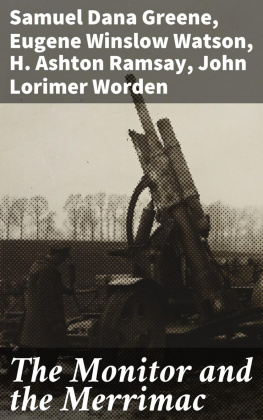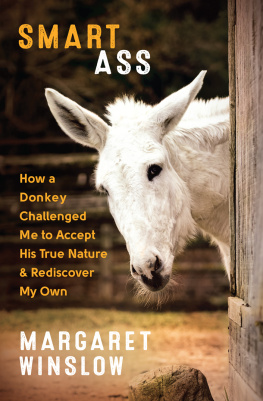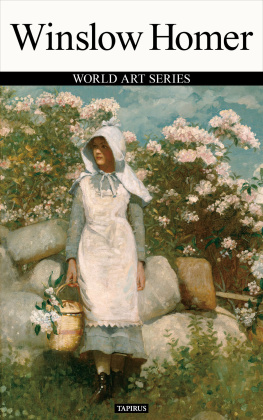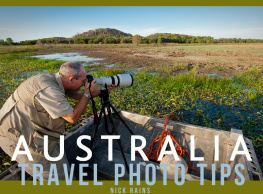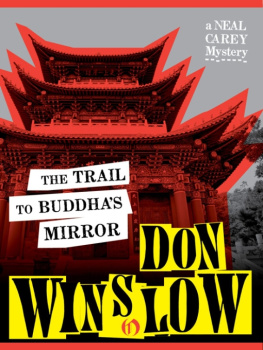The
BEST POSSIBLE
IMMIGRANTS
POLITICS AND CULTURE IN MODERN AMERICA
Series Editors:
Margot Canaday, Glenda Gilmore,
Michael Kazin, Stephen Pitti, Thomas J. Sugrue
Volumes in the series narrate and analyze political and social change in the broadest dimensions from 1865 to the present, including ideas about the ways people have sought and wielded power in the public sphere and the language and institutions of politics at all levelslocal, national, and transnational. The series is motivated by a desire to reverse the fragmentation of modern U.S. history and to encourage synthetic perspectives on social movements and the state, on gender, race, and labor, and on intellectual history and popular culture.
The
BEST POSSIBLE
IMMIGRANTS
INTERNATIONAL ADOPTION
and the
AMERICAN FAMILY

Rachel Rains Winslow

Copyright 2017 University of Pennsylvania Press
All rights reserved. Except for brief quotations use for purposes of review or scholarly citation, none of this book may be reproduced in any form by any means without written permission from the publisher.
Published by
University of Pennsylvania Press
Philadelphia, Pennsylvania 19104-4112
www.upenn.edu/pennpress
Printed in the United States of America
on acid-free paper
1 3 5 7 9 10 8 6 4 2
Library of Congress Cataloging-in-Publication Data
ISBN 978-0-8122-4910-1
Amy, Erin, Kerry, Mesha, Andria, Kimberly, Jennifer, Stacy, Kari, and Val. Without you, this project would have never existed.
CONTENTS

Introduction. The Interest of Many:
The Foundations of International Adoption
Chapter 1. Babyselling Rings, Adoption Mills, and Baby Rackets:
Formalizing Policies and Manufacturing Markets
Chapter 2. An International Baby Hunt:
The Gray Market in Greece
Chapter 3. The Great Heart of America:
Volunteer Humanitarians and Korean Adoptions
Chapter 4. Coming Out of the Shadows:
Adoptive Parents as Public Figures
Chapter 5. A New Kind of Racial Alchemy:
International Development, Transracial Adoption, and the Vietnam War
Chapter 6. Children of Controversy:
Operation Babylift and the Crisis of Humanitarianism
Epilogue. The Legacy of Voluntarism:
International Adoption in the Twenty-First Century

AHEPA | American Hellenic Educational Progressive Association |
CCAC | Citizens Committee on Adoption of Children in California |
CORDS | Civil Operations and Revolutionary Development Support |
CWLA | Child Welfare League of America |
FAP | Family Assistance Plan |
FCVN | Friends of Children of Vietnam |
FFAC | Friends for All Children |
GVN | Government of South Vietnam |
HAP | Holt Adoption Program |
INS | Immigration and Naturalization Services |
ISS | International Social Service-American Branch |
IVAC | Interagency Vietnam Adoption Committee |
MAC-V | Military Assistance Command-Vietnam |
NAACP | National Foundation for the Advancement of Colored People |
NABSW | National Association of Black Social Workers |
NCAPO | National Council of Adoptive Parents Organizations |
NCSW | National Conference of Social Work |
NGO | Nongovernmental organization |
NVA | North Vietnamese army |
RRA | Refugee Review Act |
SCA | Bureau of Security and Consular Affairs |
UNRRA | UN Relief and Rehabilitation Administration |
USAID | U.S. Agency for International Development |
USCB | U.S. Childrens Bureau |
USCOM | U.S. Committee for the Care of European Children |
WAIF | World Adoption International Fund |

IN TWENTY-FIRST-CENTURY AMERICA, international adoption has become an integral and invisible part of the nations social and cultural fabric. From popular icons like Madonna to the family down the street, adoptive parents have come to populate the front covers of magazines as well as middle-class neighborhoods. Indeed, the numbers reinforce its ubiquity and importance. International adoptions doubled in the 1990s and by 2014 reached an all-time high of 22,991. These realities have led some to label the United States an adoption nation.
Yet, according to more recent statistics, Americas status as an adoption nation appears insecure. In 2013, U.S. citizens adopted only 7,092 children from other nationsa 69 percent decline since 2004. When the State Department released these figures, all the major news organizations heralded the institutions steep and drastic decline. The foremost question was unsurprising: what was the cause? Were stricter international regulations from the Hague Convention to blame? Did agencies provide too little oversight, leading countries like Russia to question U.S. procedure and curb their overseas programs? Was it because of foreign corruption, which left childrens paperwork in administrative limbo? Or did increased demand from the evangelical Christian adoption movement prompt heightened scrutiny from foreign governments? Following the news storm, a few members of Congress issued press releases that assured constituents they were committed to maintaining robust international adoption programs. Proposed legislation included the Children in Families First Act. The bill, still under debate, aims to ensure a family for every child through more favorable international adoption laws and stricter control on foreign
Declines in foreign adoptions are not new. Neither are the conflicts between sending and receiving nations, nor the internecine squabbles between public and private adoption interests. What no one suggested was that these recent events were part of a much longer story. A host of competing perspectives have long governed the formation and success of an international adoption tradition in the United States. The factions and processes partly responsible for current conditions are a messy, complicated negotiation that spans from the early Cold War to the U.S. withdrawal from Vietnam. While not an easily distillable story, its an illuminating one that involves the influence of private institutions, adoptive parents power as constituents, and Americans captivation with foreign orphans.
From 1947 to 1975, U.S. citizens adopted an estimated 35,000 children from overseas. Although only a small percentage of the nonrelative adoptions that occurred in this period, these adoptions were widely publicized and highly visible. War orphans and GI babiesthe offspring of U.S. soldiers and foreign womenreceived the most press in the United States. Yet from the onset American couples were eager to adopt all types of foreign children, regardless whether they had surviving parents or connections to the military. Expectant couples, especially mothers, bombarded social welfare agencies and political leaders with appeals.
Next page


